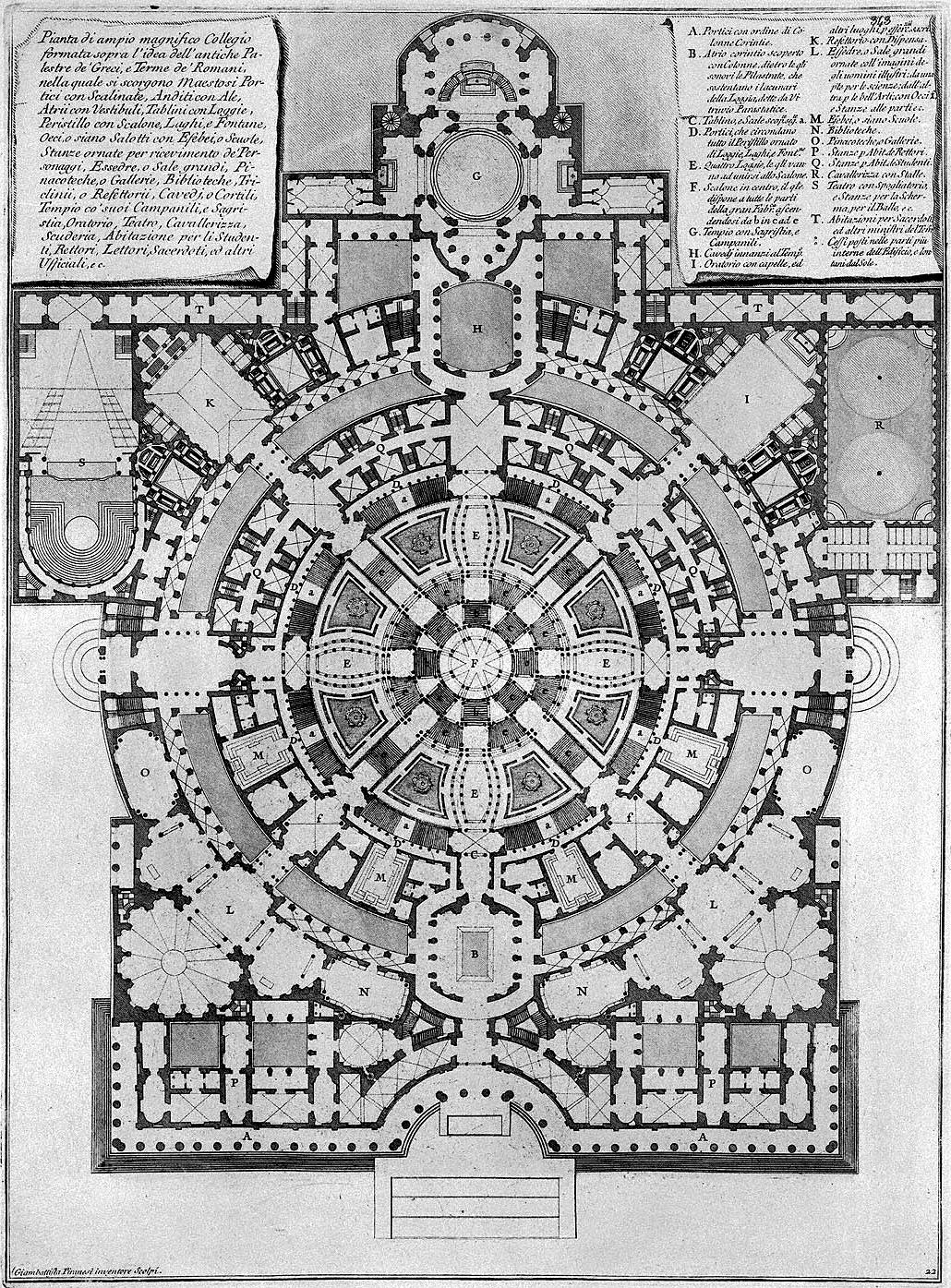atypical atemporal otherness continuum |
or do you also like historical architectural styles? |
Piranesi's first plan? |
|
|
That Piranesi's engravings, however, present to us not merely a set designer's whim, but rather a systematic criticism of the concept of "center," is clerly shown in the Pianta di ampio magnifico Collegio (Plan for a Vast and magnificent College), inserted in the 1750 edition of the Opere varie di architettura (Selected Architectural Works).
|
Piranesi also draws in buildings that never existed. They seem at first glance to be memories of buildings that could have existed; they look like buildings until one examines them as functioning buildings. This idea of a building as a trace of function is similar to Piranesi's project for the Collegio Romano [sic], which has a seemingly centralized plan. However, when it is analyzed, it does not actually function; it only symbolizes its function.
|
|
www.quondam.com/78/7801e.htm | Quondam © 2019.12.18 |
